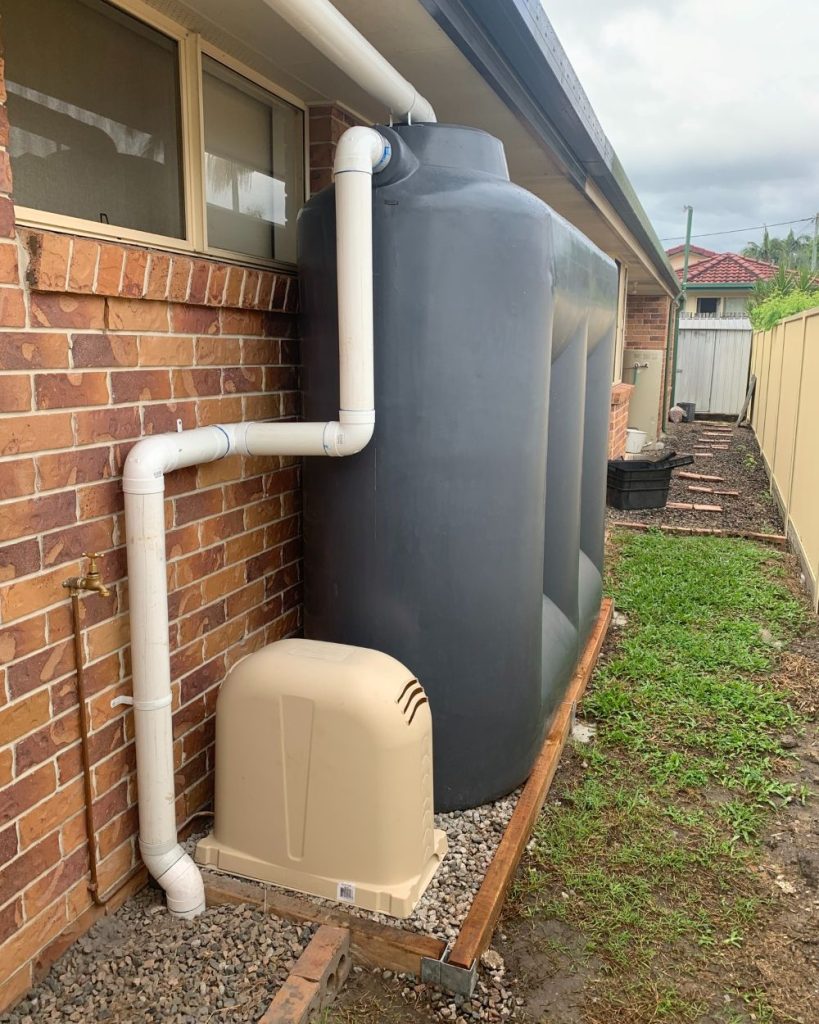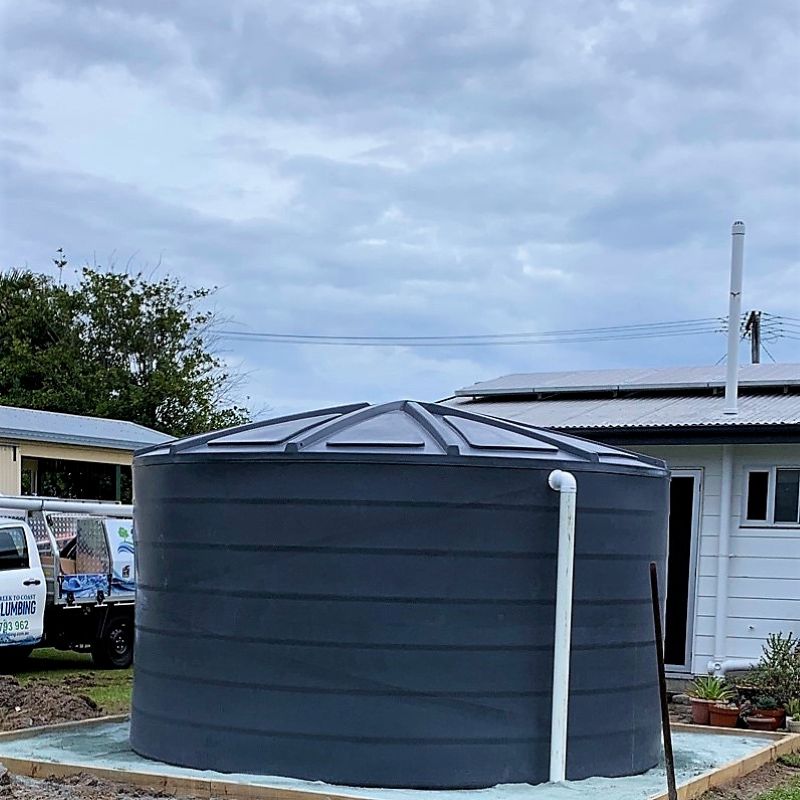Choosing the Optimal Rainwater Harvesting System to Suit Your Lifestyle and Enhance Water Conservation Efforts
In Queensland, a growing number of homeowners are embracing rainwater tanks as a practical solution for reducing utility expenses, alleviating pressure on local water resources, and fostering drought-resilient properties. Before diving into an investment in a rainwater tank, it is essential to address a significant consideration: How much water do you realistically require for your needs?
At Creek to Coast Plumbing, we specialise in supporting homeowners to design effective rainwater harvesting systems, with determining the appropriate tank size as a crucial initial step in this planning process.

Enhance Your Rainwater Collection Efficiency for Sustainable Living Practices
Assessing your rainwater collection potential is the foundational step towards effective water resource management. This potential is influenced by two key factors: your roof area and the average annual rainfall in your region. Gaining insight into these elements is vital for strategically planning your rainwater harvesting system.
Here are some specific details to bear in mind:
- Typically, for every square metre of roof area, approximately 1 litre of water can be collected for every 1mm of rainfall.
- If your roof measures 200m² and your locality receives 1,200mm of rain each year, you could theoretically collect 240,000 litres annually.
Nevertheless, it is imperative to acknowledge that this represents an ideal scenario. Various factors such as first flush systems, evaporation, roof slope, gutter configuration, and overflow mechanisms will contribute to water loss.
We generally recommend planning for a collection efficiency of 80–90% to effectively accommodate these variables.
What Are Your Intended Uses for the Collected Rainwater and Its Applications?
At this stage, practical considerations become paramount. Are you collecting rainwater solely for garden irrigation, or do you intend to utilise it for toilets, laundry, or even for all your household needs?
Here are some essential factors to consider:
Determining the Ideal Size Tank for Your Garden Irrigation Needs
If your primary objective is to irrigate lawns, vegetable gardens, or ornamental plants, a small to mid-sized tank (2,000–5,000 litres) should suffice.
However, this largely depends on the dimensions of your garden and local rainfall patterns.
In regions where short, intense rain showers are prevalent, larger tanks may be necessary to capture as much rainwater as possible during these downpours.
Integrating Rainwater for Laundry and Toilet Applications in Your Home
Households that use rainwater for toilets and washing machines often find that 5,000–10,000 litre tanks provide significant benefits. These household appliances typically account for approximately 35–40% of indoor water consumption, which can lead to substantial cost savings over time.
It is crucial to incorporate a pump and appropriate plumbing to connect these systems to your home, a service expertly managed by Creek to Coast as part of our installation process.

Key Considerations for Supplying Rainwater to Your Entire Household
If your goal is to achieve complete self-sufficiency or to provide rainwater to every tap in your home, you will likely need 20,000 litres or more, depending on the size of your household. Larger tanks can also serve as a backup water supply during fire emergencies, dry spells, or when hosting guests.
How Many Residents Are There in Your Household and Their Water Needs?
A practical guideline suggests allocating around 150–250 litres per person per day when utilising rainwater for general household activities.
- For a couple: a 5,000–10,000 litre tank is generally adequate.
- For families of four or more: consider 10,000–20,000 litres or larger to ensure a sufficient water supply.
The number of occupants in your home will directly impact how quickly your tank depletes, particularly during dry spells when water conservation becomes critical.
Is Your Roof Area Sufficient for Effective Rainwater Harvesting Practices?
The dimensions of your roof are vital in determining the quantity of rainwater you can efficiently collect.
A larger roof area enhances your capacity to harvest water.
Moreover, the configuration of your roof is significant. If your residence features multiple roof sections that can channel water into a single tank, we can devise an efficient downpipe system to maximise water capture from all available surfaces.
For smaller homes or townhouses, slimline or under-deck tanks may be the most suitable solution, and Creek to Coast can assist in identifying the optimal option for your specific requirements.

Essential Components: Placement, Guttering, and Overflow Management for Effective Rainwater Systems
Successful rainwater harvesting involves much more than just the tank itself; it requires a well-planned system.
An effective system includes:
- Robust, well-maintained gutters to prevent blockages
- Leaf guards and first flush diverters to ensure water quality
- Overflow systems that safely redirect excess water away from your home’s foundations
- A solid, level tank pad or base to securely support the structure
Creek to Coast Plumbing provides comprehensive rainwater system installations, which encompass gutter enhancements, pump connections, stormwater management, and filtration systems to ensure that your tank is secure and ready for immediate use from day one.
How Can You Ensure Cleaner and Safer Rainwater for Your Home?
We highly recommend the installation of a whole-house rainwater filtration system, particularly if you plan to utilise your collected rainwater for more than just garden irrigation.
The Puretec Hybrid Plus systems, expertly installed by our team, can effectively eliminate sediments, odours, tannins, bacteria, and also adjust the water’s pH to minimise copper leaching and pipe corrosion. Explore the numerous advantages of water filtration for your collected rainwater.
Making Informed and Strategic Choices for Your Rainwater Tank Selection
Choosing a rainwater tank involves more than just selecting the largest option available; it’s about aligning your system with your roof dimensions, the rainfall patterns in your area, and your specific water consumption requirements.
At Creek to Coast Plumbing, we have been assisting Queensland homeowners in creating sustainable rainwater systems for over 30 years. From determining the ideal tank size and placement to comprehensive guttering and filtration solutions, we are dedicated to ensuring that you maximise every precious drop of rainwater.
The Article: Choosing the Right Size Rainwater Tank for Your Queensland Home first appeared on https://writebuff.com
The Article Choosing the Right Size Rainwater Tank for Queensland Homes Was Found On https://limitsofstrategy.com
The Article Rainwater Tank Size: The Best Fit for Queensland Homes found first on https://electroquench.com

